Eternals Gotta Eternal in Kieron Gillen, Esad Ribic, and Matthew Wilson’s Eternals: Only Death Is Eternal
As Gillen writes them, The Eternals fall somewhere between the worshipped and the worshippers. They’ve been abandoned by their gods who they vowed to protect; the Celestials recognize the rise of human superbeings as taking over the functions of the Eternals.
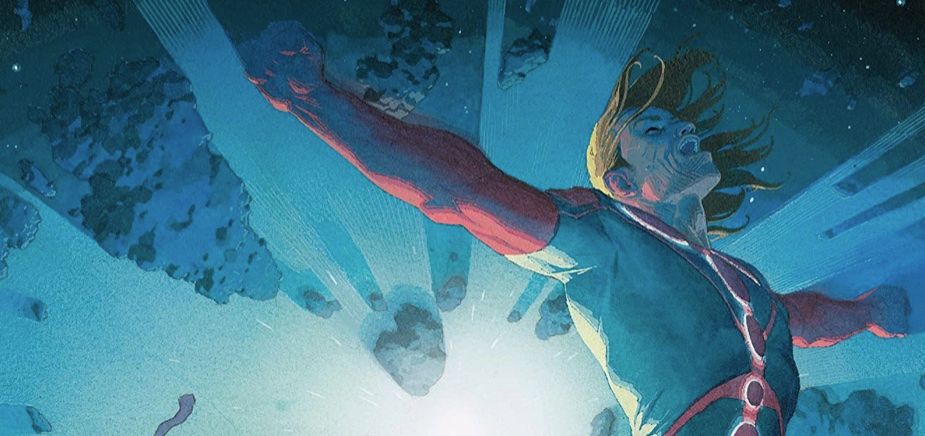
Let’s talk about gods (small “g”) and Kieron Gillen’s fascination with them. His early Marvel work centered on Loki, taking Thor’s adopted brother and turning the trickster god into the trickster child, thus offering a view of the character that turned our perceptions of him upside down. It turned him into a hero from a certain point of view without throwing away everything we knew about the character or his past evil deeds. But it offered a new perspective on this all-too-familiar Asgardian that carries through to today, including the recent Loki television show. Then a few years later, he flipped the script with The Wicked + The Divine, turning pop stars and their fans into the newest 21st-century godly pantheon. Many of these gods were small and petty as they couldn’t escape their own innate humanity.
Gillen's gods offer a view of divinity through a very human lens, which in itself isn’t necessarily anything new, but Gillen throws such a modern spin into these gods that they become this reflection of ourselves and our times. And it even works with Star Wars and what Gillen did in Darth Vader. There’s a part of Gillen’s career built on taking swipes at these all-powerful gods and being, knocking them around and down a bit to make them something a bit more recognizable; to make them more human.
Jack Kirby was another comic creator fascinated by the gods. A child of the early 20th century, Kirby created our modern myths, legends, and gods. From the Asgardians to the New Gods through to The Eternals. There was an austerity to his gods that he always sought to preserve. Kirby defined the new gods of mythology. Kirby, along with Joe Simon and Stan Lee, gave us creation myths, morality talkies, showing us what a small and broken people could become. These gods weren’t us but they were either an aspiration (the New Gods) or a warning (Darkseid and his minions.) They could walk among us but they were rarely us which is quite the opposite of his take on very human gods in The Fantastic Four or the other Marvel silver age heroes. By the time he was working on his 1970’s comics, Kirby was looking to his characters as guides for humanity. They were protectors but also an evolutionary step. Jack Kirby dealt primarily with heroes and that is what his gods were.
That’s why people have often stumbled when they have tried to revitalize either The New Gods or The Eternals. No matter how much the creator may idolize Kirby (see John Byrne’s attempts at New Gods stories,) they are not Jack Kirby and don’t have his worldview or his imagination. The comics either feel like a rehashing of what Kirby already did (again, Byrne’s New Gods) or a-swing-and-a-miss efforts that don’t go anywhere (see the numerous attempts at Marvel to make The Eternals a thing, including Neil Gaiman’s.) Kirby has such a long shadow that comics, particularly Marvel comics, are still trapped under. Occasionally you’ll get a creator who finds new ways to approach Kirby on their terms and find new ways to use these characters to explore their concerns without stumbling over just trying to recreate the comics that they’ve read. See Walt Simonson’s Orion for a completely faithful interpretation of Kirby but also a very personal and creator-driven story from Simonson.
It’s obvious through their work in Eternals Volume 1: Only Death Is Eternal that Kieron Gillen, Esad Ribic, and Matthew Wilson revere the work of Jack Kirby. This comic couldn’t exist without that respect for its origins. Gillen pulls a neat trick, opening the story with a resurrection: Ikaris reborn and the story begins. It simultaneously respects what has come before while it signals the beginning of something new. Ikaris is reborn and with him, the unknown sins of the Eternals are resurrected. He’s awake to a new life and the world begins falling apart. It’s a great opening that provides a solid foundation for this new story.
In Ribic and Wilson’s images, we find an uneasy tension between the world that we know and recognize and this alien culture that claims to protect us. These Eternals, these gods, live under a millennia-old mission: “Protect Celestials. Protect the Machine. Correct excessive deviation.” Protecting humankind falls somewhere in that, so when Ikaris has a vision of a tombstone for a boy he doesn’t know, he vows to protect that boy. His vision is a mission to him even if an also-newly resurrected Thanos is threatening the Eternals and the Machine. There’s a certain amount of ego in Ikaris’ assumption that the boy needs protecting. That Eternal ego is another driver in this story.
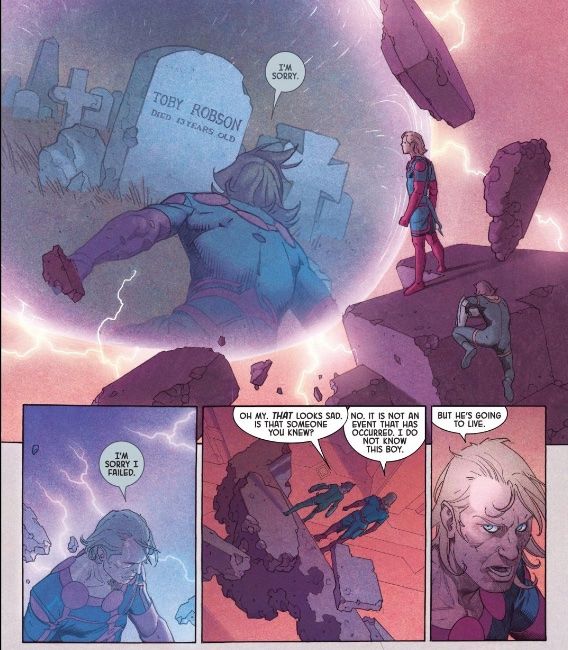
Ikaris has sworn to protect Toby Robson, the high school student whose grave he saw in a vision. Ribic shows Ikkaris appearing over Toby’s New York home, floating above it like a blond, perfect god. Ikkaris isn’t shown as a servant or as a protector but as a higher being. He eventually comes a bit down to Earth, pleasantly accepting a cup of coffee from Toby’s mother but he’s never a part of their world like he charges Sprite to be when he’s off battling Thanos. Sprite fits in a bit better as Toby’s bodyguard but even she’s something different from Toby, something from outside of his world.
It’s arrogance that Ribic shows whenever he draws Ikaris in the early pages of this comic. All of the Eternals exhibit some of the same arrogance but Gillen shows a bit of self-awareness in them that Ikaris is completely lacking. Even Sprite, the eternally youthful Eternal who tried to kill them in previous incarnations, appears more aware of who she is than Ikaris can ever be. Ikaris believes himself to be noble and righteous. If he is, he’s the only Eternal who may be those things. This lack of self-awareness though is something that’s at the core of the Eternals and it’s the biggest struggle they face in this story, even bigger than a homicidal, Death-worshiping Thanos. It’s both self-awareness and the lack of it that are the sits of these characters.
It’s almost funny how well the narrator of the book, The Machine, knows Ikarris even if he doesn’t completely know himself. The Machine that they’re supposed to protect is the Earth, which is self-aware in this book and is Gillen’s unreliable narrator. Even older than the Eternals, the Machine has watched over these men and women, knowing which one of them are arrows and which of them are snakes. They’re cogs in its existence and it knows how each of them fits together. But something is wrong; the Machine is broken. So even as The Eternals are battling among multiple fronts, the thing that they’re fighting for is falling apart around them.
As Gillen writes them, The Eternals fall somewhere between the worshipped and the worshippers. They’ve been abandoned by their gods who they vowed to protect; the Celestials recognize the rise of human superbeings as taking over the functions of the Eternals. Cast aside, they continue to perform their tasks even as others have risen to take them on. But Gillen frequently relates them to the gods of old, citing how they’ve often been mistaken by humanity as true deities and not just enhanced beings. The Eternals represent an old system, a dependable but outdated system. Sometimes those old systems can be updated and given a new life but sometimes, they just need to be thrown away and you need to get a whole new one.
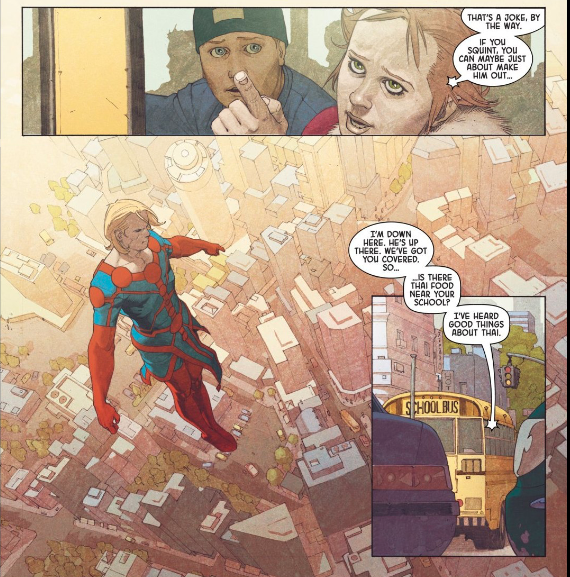
Another Eternal Thena lives the same disconnected life as Ikkaris. The evolutionary flipside of the Eternals is the Deviants, a race of goblins and ghouls who are far more humanlike than the Eternals are. Thena takes on Deviant lovers, trying to understand them and how they have a life that the Eternals never could. While there are the external battles to protect the Machine, defeat Thanos, and even find a traitor in their midst, there’s a much deeper questioning of the nature of the Eternals. In an age of superheroes, why do the Eternals even exist? Beyond the story in front of us, what is their purpose? Why do the Eternals matter? Gillen, Ribic, and Wilson seem determined to tell us why?
And ultimately, it turns out that it’s the nature of the Eternals that may be their biggest battle. Gods or man? Worshipped or worshippers? Life or death? All of those dialectics strike at the biggest lie that the Eternals tell themselves. In many ways, The Eternals continues the questions that Gillen started in The Wicked + The Divine but the Eternals are not nearly as self-aware as any of those characters were. Lucifer, Persephone, Baal, and Cassandra were far more tuned into themselves, their narrative precedents, and even the world around them than Ikkaris, Thena, Sersi, or Sprite ever can be.
Kieron Gillen, Esad Ribic, and Jack Kirby marvel (no pun intended) at the power of these gods (still a small “g”) but Gilland and Ribic aren’t quite the believers that Kirby was when he created these characters. While Ribic brings an air-brushed-fantasy-van grandiosity to this story, Gillen is far more subversive. On the surface, this is a story of heroes in the Mighty Marvel tradition but Gillen remembers that behind our heroic memories of that tradition is another thread of humanity inherent in the Marvel characters. The Marvel heroes are messy, imperfect, and often their own worst enemies. In that way, Gillen, Ribic, and Wilson are giving us a very traditional Marvel comic that Jack would have been proud of.
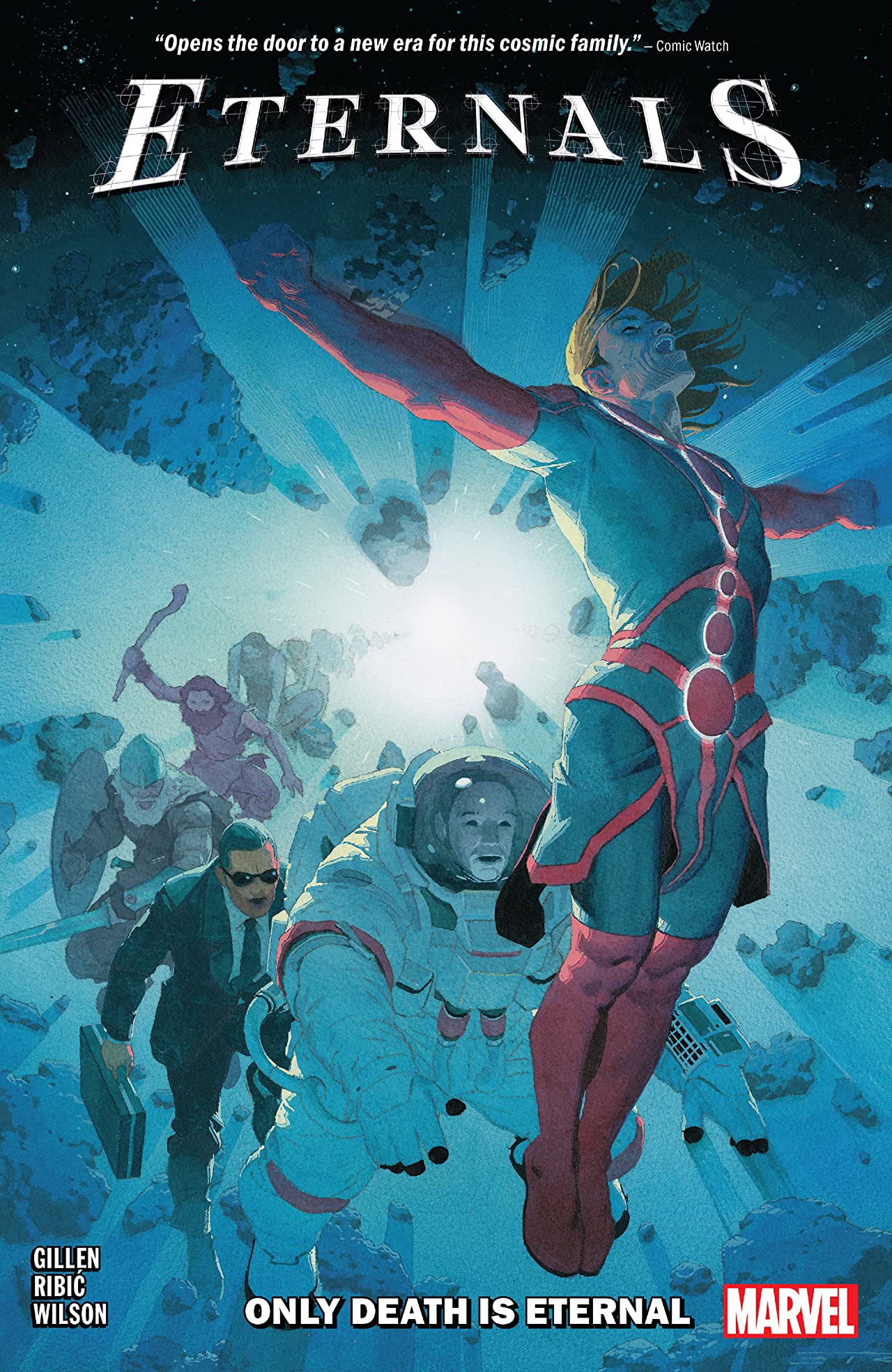


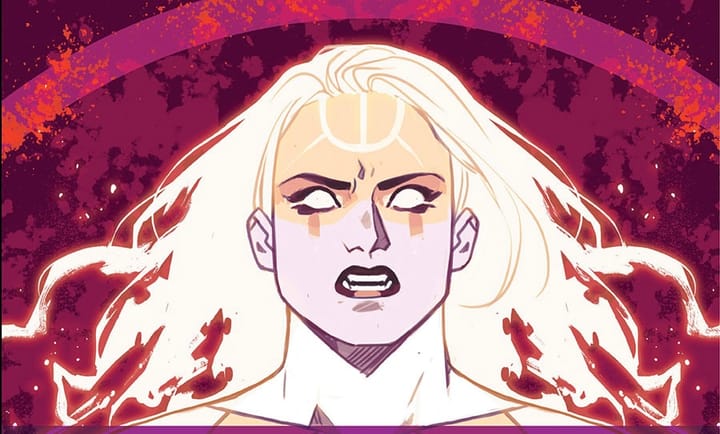

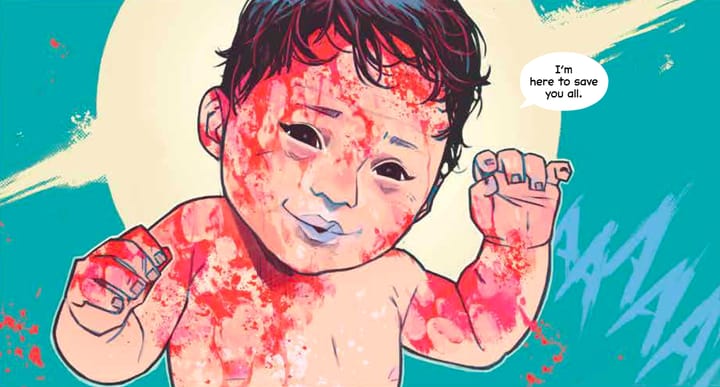
Comments ()